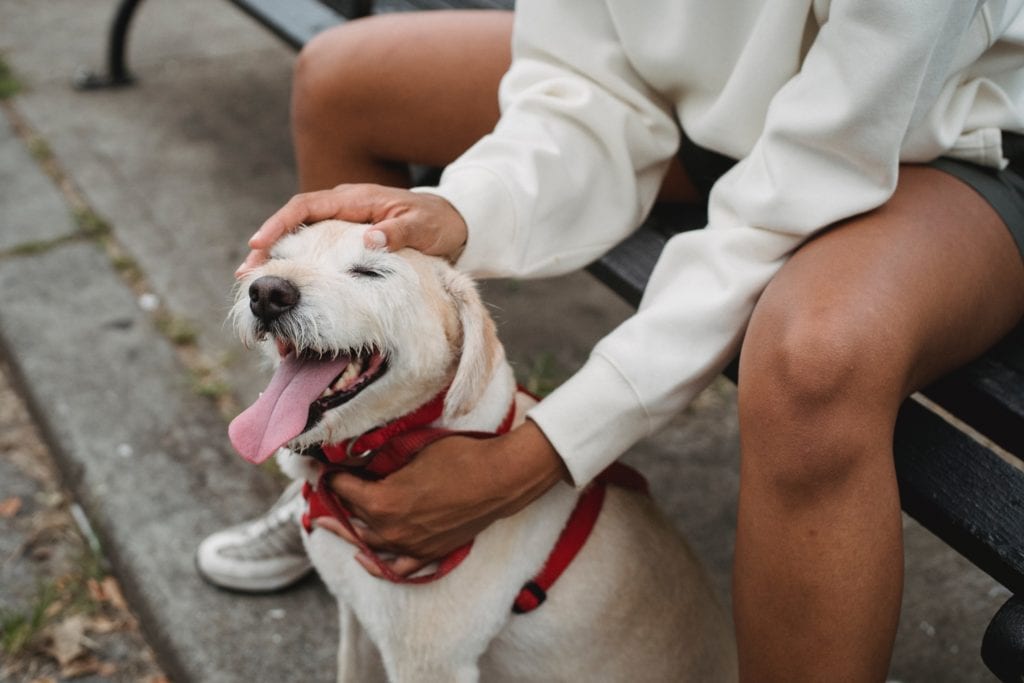Walking dogs is not always a simple task. Often people struggle with high energy pets that require additional measures to properly walk them. Most find the best option in getting their pets to walk alongside them is with proper training. Although having the proper tools, like a harness or collar, can ease the process and help guarantee a successful outcome, you must ask yourself, “What is the best harness for a dog that pulls?”
How Do You Get a Dog to Stop Pulling on Walks?
With the initial introduction on training not to pull, most trainers prefer a dog training collar rather than a dog training harness. The following collars are most often suggested for starting out:
- Martingale Collars
- Prong Collars
- Gentle Leader Dog Collars
- E-Collars (Electric Collars)
Martingale Collars
The Martingale Collar is a standard-looking collar that tightens when the dog pulls. It is designed to put pressure or tension on the dog's neck to indicate the incorrect behavior of pulling. There is some discomfort with this particular collar, as occasionally, it can place too much pressure on your dog’s neck, so it is important to provide lots of direction and guidance so as not to harm your pet.
- See pricing and availability on Amazon
Prong Collars
Prong Collars are a little intense looking but can be very useful to correct pulling dogs. The Prong is a chain collar that has non-sharp prongs that stick inwards towards the dog’s neck. Just like the Martingale Collar, the Prong Collar also tightens when the dog pulls. With the additional prongs pressed against the neck, it makes it even less desirable for dogs to pull, as the pressure of the pongs typically shocks them. Although, just like the Martingale Collar, it’s strongly advised to provide a lot of direction and guidance as well. This collar can be uncomfortable for dogs if used incorrectly.
- See pricing and availability on Amazon
Gentle Lead Collars
Gentle Lead Collar otherwise known as the headcollar, is a standard collar with an additional strap attached that wraps around your pet’s mouth. It looks a little strange, but in the end, this is probably the gentlest way to teach your pup not to pull. The clip of the leash will not only pull on their neck but will also pull their face back as they pull. It's uncomfortable to an extent but they tend to quickly get the picture that if they don't want their full face being held back while pulling, it's best not to pull in the first place.
- See pricing and availability on Amazon
E-Collars (Electric Collars)
E-Collars are a little more extreme than the other collars, and more like the Prong Collar. While most E-Collars boast a loud beeping nose to indicate unwanted behavior, E-collars are also known for emitting a slight shock to your pet when they engage in unwanted behavior. This particular collar is often used to correct either unwanted barking or as an electric fence to prevent your pup from running away, but it can be used to train for non-pulling as well.
- See pricing and availability on Amazon
The Best Dog Harness
Harnesses are best for when your dog has a little more direction, but can also be a good starting tool as well if you provide good proper training alongside them. It can be hard to differentiate and choose the best dog training harness. There are plenty of harnesses out there that claim a ”no-pull” style, but ultimately it comes down to the placement of the restraints with the harness and where the clip on the leash is located.
The following harnesses are most often suggested for when your dog has a little more direction:
- Voyager Harness or Back Clip Harness
- Easy Walk Dog Harness or Front Clip Harness
The Voyager or Back Clip Harness
A good example of a sturdy harness is the Voyager Harness that has a full chest restraint that goes around both sides of the chest and under the body to wrap around and ultimately clip onto the pet’s back. With adjustable straps, the harness sits snug around your pet and provides a good hold on them as they walk next to you. With back clips, the pressure from the dog pulls is now all on their shoulders. Most pets find that pressure on the shoulder is less restraining and can also be less of a deterrent to pull. Most working dogs (such as huskies) have harnesses that wrap around their shoulders so that the weight of what's holding them is more evenly distributed through their body and results in better pulling.
Easy Walk Dog or Front Clip Harness
The Easy Walk Dog Harness is similar to the Gentle Lead Collar as a gentler approach in non-pulling training. When a dog pulls, the clip in the front re-directs the dog’s entire body rather than holding them back like a back clip harness. Front Clip Harnesses like the Easy Walk disorient the pet when they try to pull forward.
- See pricing and availability on Amazon
Final Tips
- Training is key in having a non-pulling pup! The best tip besides having the proper collar/harness is to have high-reward treats during your walk. Keep and give the treats by your side as you walk to indicate that the source of food is right next to you. Lots of treats at the beginning and eventually ween off of them.
- Walking back and forth is a good training exercise. As you start to walk forward, once your pup starts to pull, you turn the other direction. This is a good indicator that you are the leader of the walk and not your dog. You decide where to walk and you only move forward when your dog walks properly.
- Training command words are highly suggested. Words like ”Heel” can be a really good recall when your dog gets distracted or sees another dog that causes them to pull harder. When teaching command words while on walks, reward heavily and with really high-valued treats to enforce that this is a highly desirable behavior.
- Lastly, be patient with your dog. They are still learning and trying their best to understand what you want from them. It will take many sessions to get your dog to stop pulling and sometimes they will mess up. Using less restrictive harnesses/collars is the end goal so that you and your pet can be comfortable and happy on your walks together.







